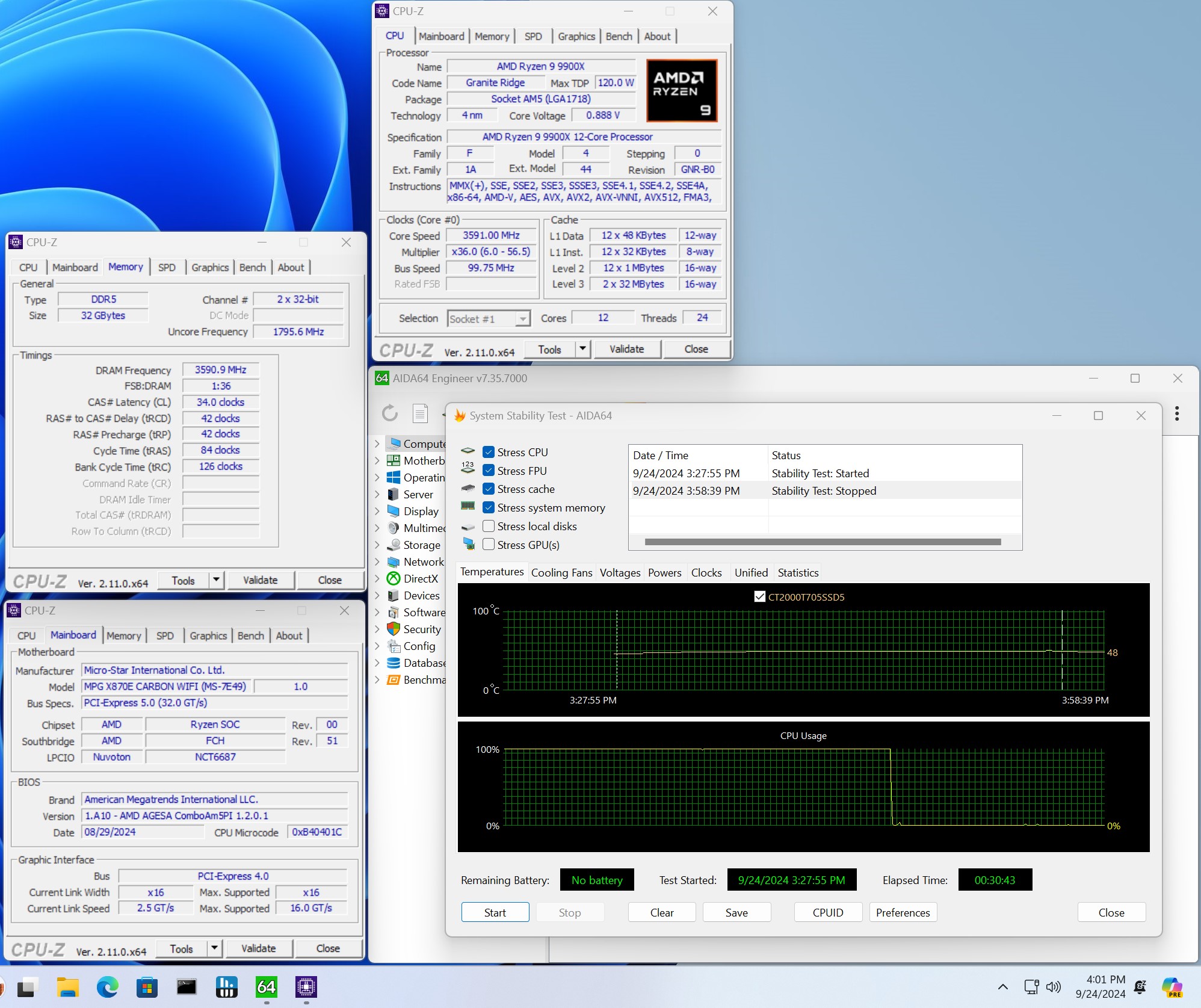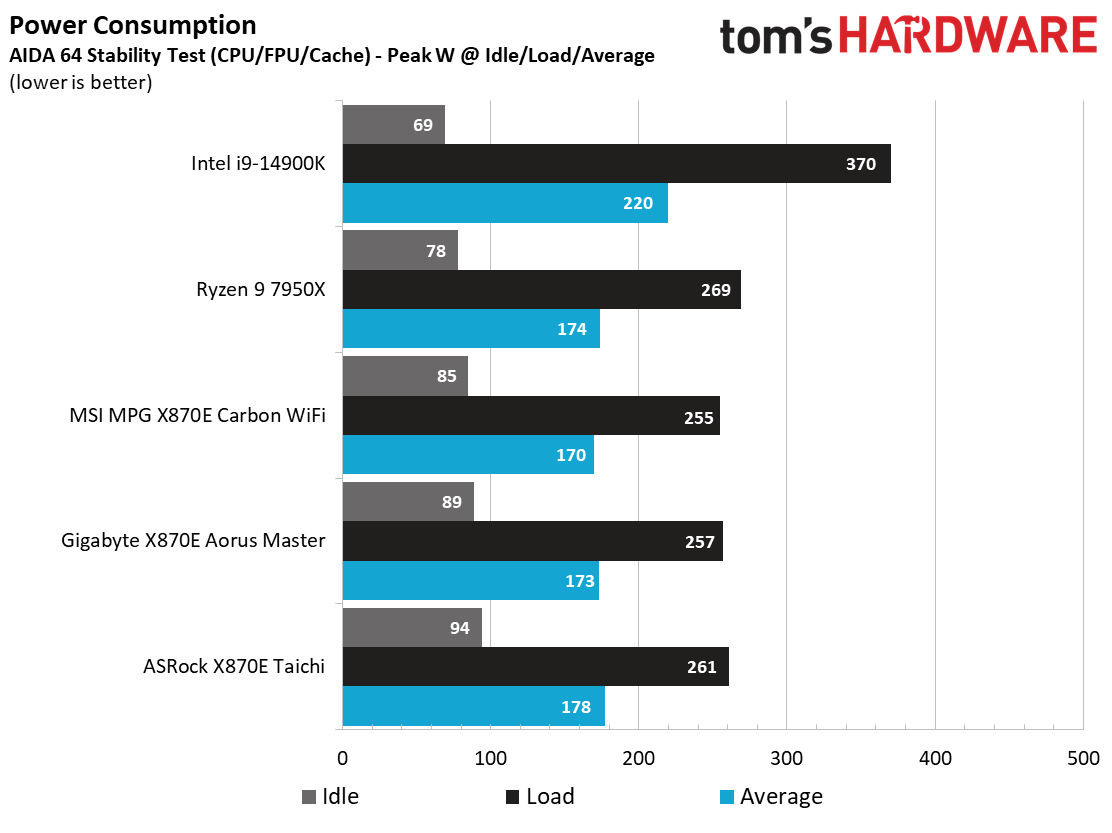Why you can trust Tom's Hardware
Our standard benchmarks and power tests are performed using the CPU’s stock frequencies (including any default boost/turbo) with all power-saving features enabled. We set optimized defaults in the BIOS and the memory by enabling the XMP profile. For this baseline testing, the Windows power scheme is set to Balanced (default) so the PC idles appropriately.
Synthetic Benchmarks
Synthetics provide a great way to determine how a board runs, as identical settings should produce similar performance results. Turbo boost wattage and advanced memory timings are places where motherboard makers can still optimize for stability or performance, though, and those settings can impact some testing.
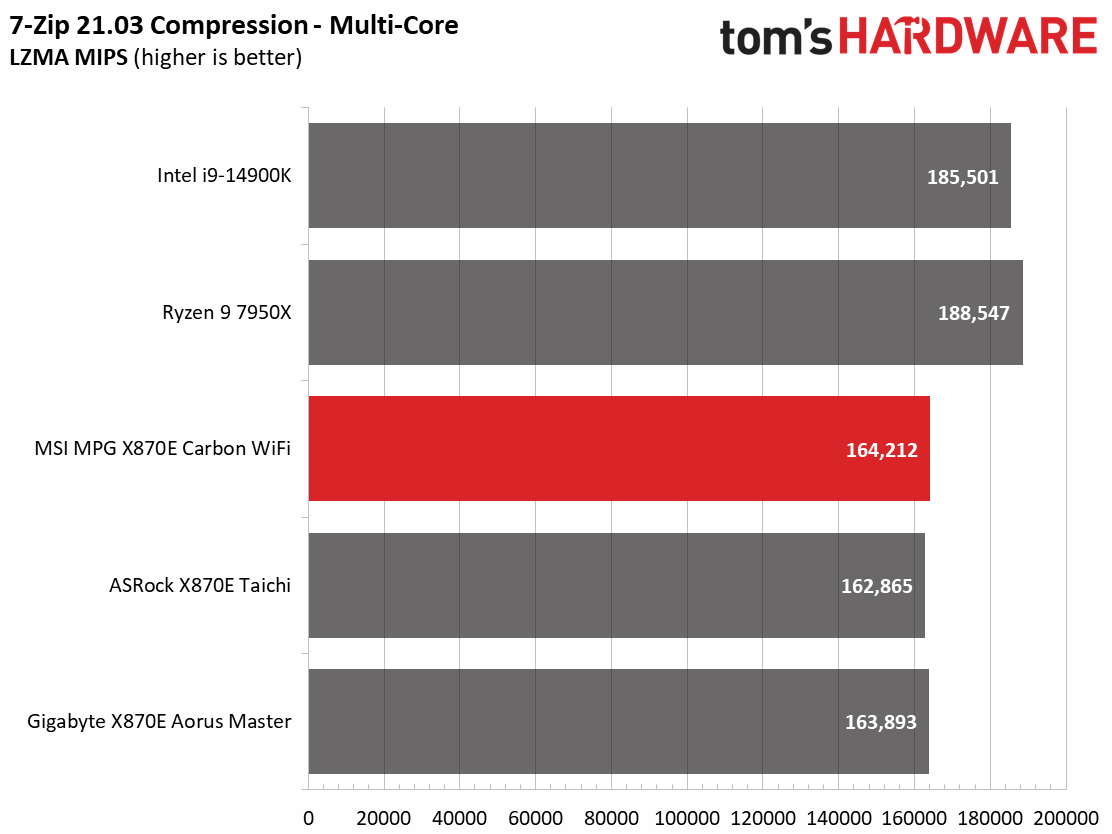






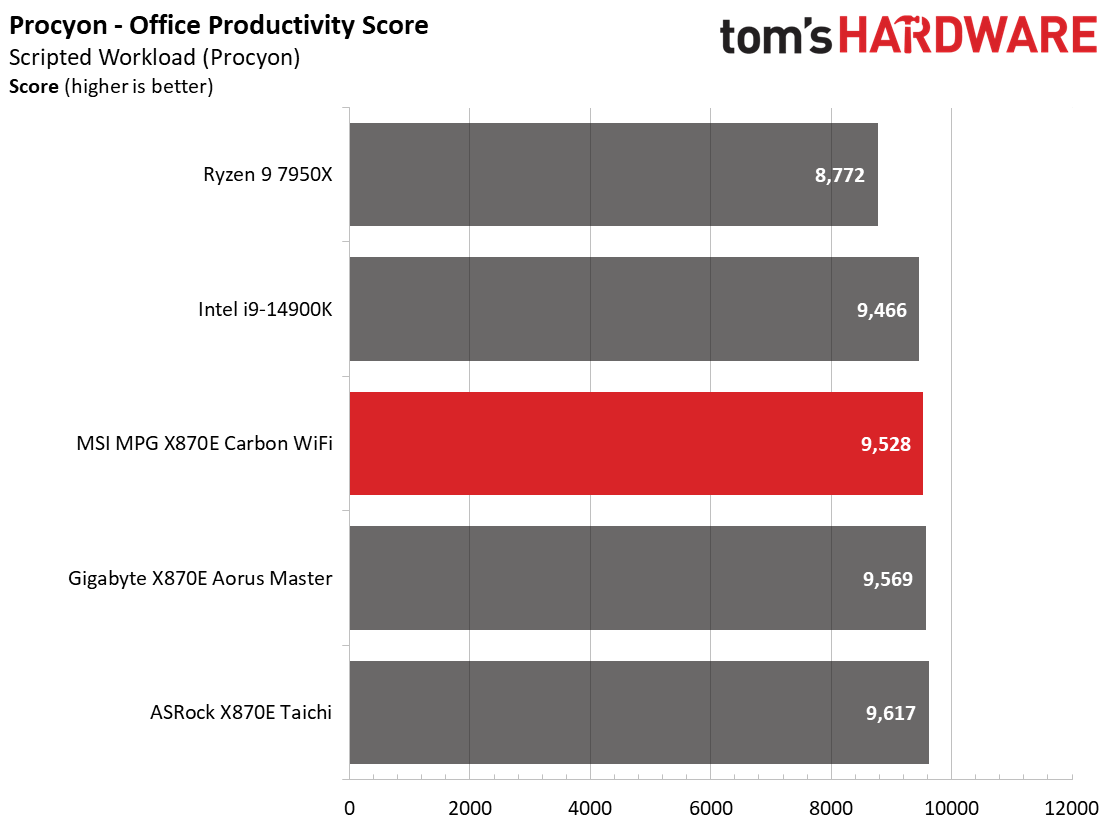

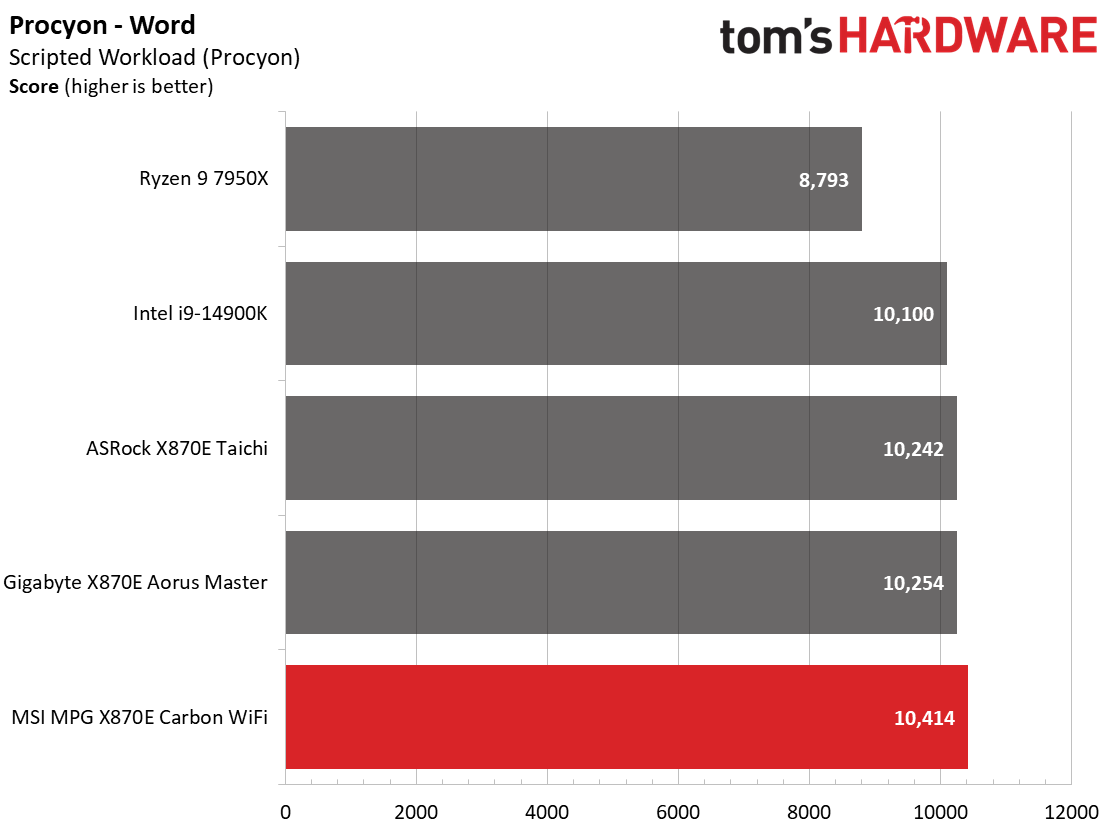


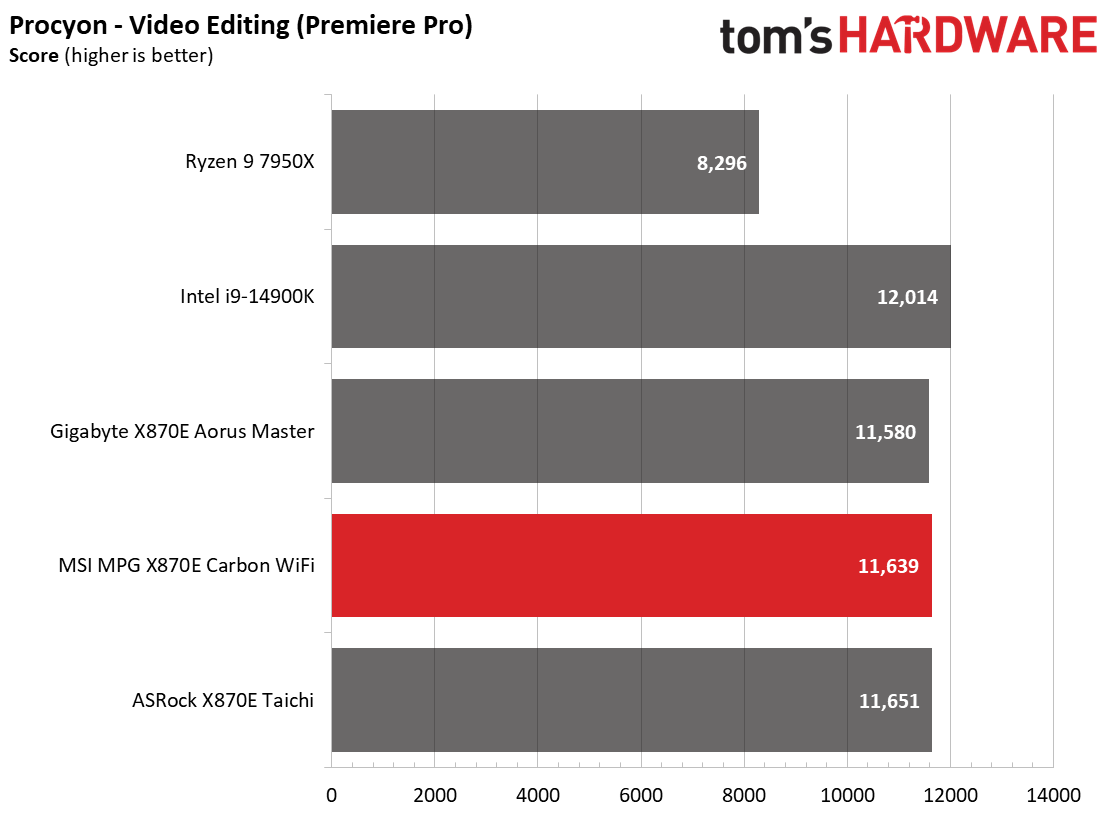




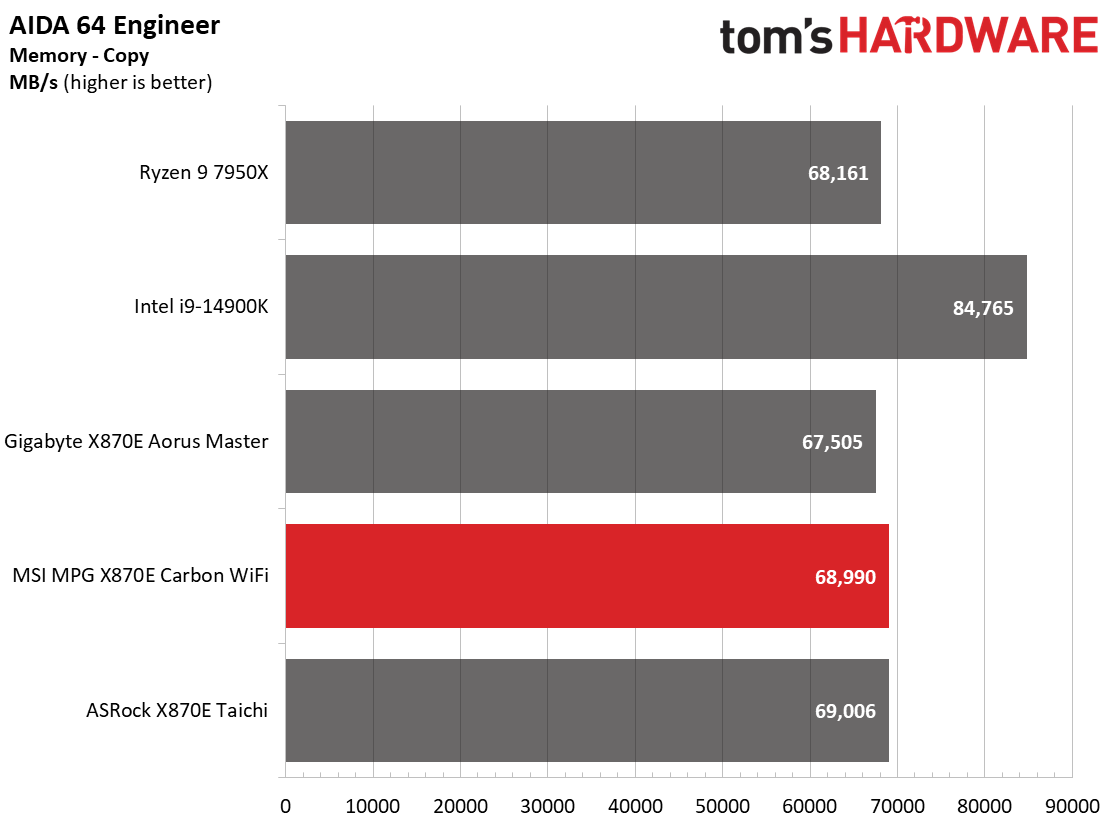
In our first run with the Ryzen 9 9900X, we saw a lot of parity among our early data sets. Most performance differences were negligible among the three boards tested so far. It is slower than the 14900K and 7950X but is closer than some may think.
Timed Applications



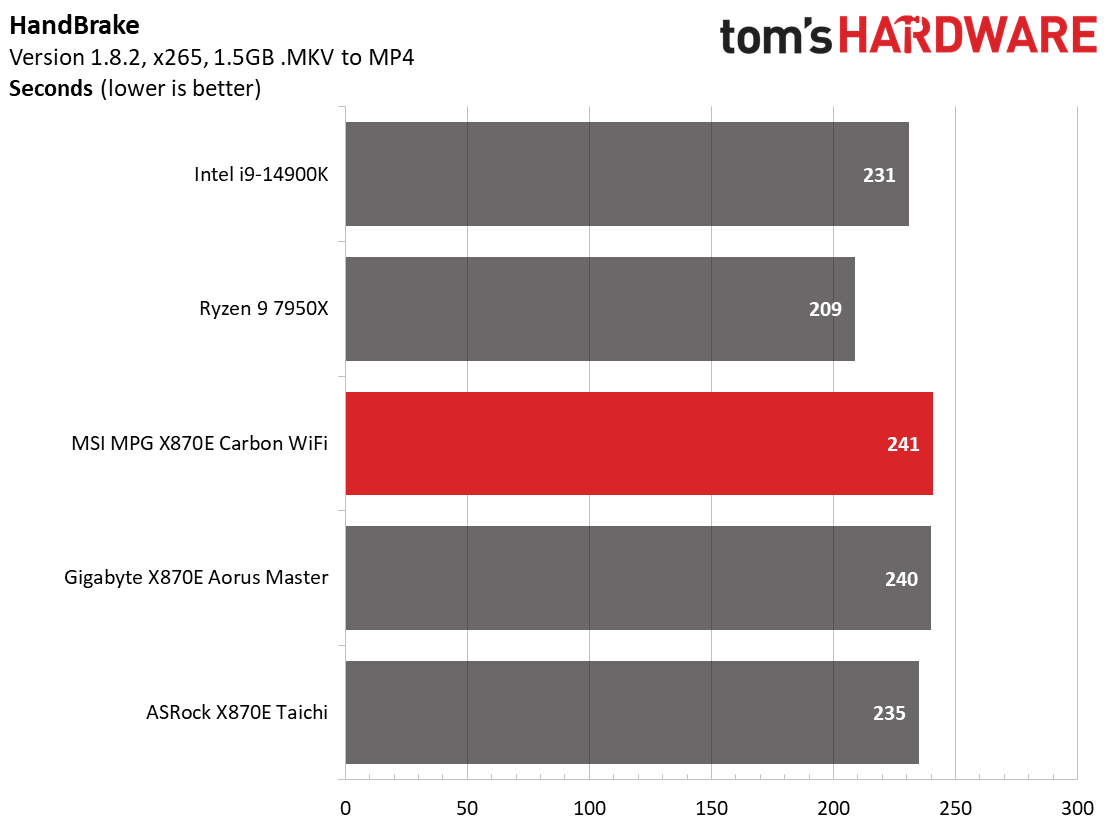
In our timed benchmarks, we again saw similar results across the early testing. In fact, in all tests (LAME, Corona, and Handbrake), the performance difference among boards is negligible so far.
3D Games and 3DMark




Starting with the launch of Zen 5, we’ve updated our game tests. We’re keeping the EA’s F1 racing game and have upgraded to the most current version, F1 24. We also dropped Far Cry 6 in favor of an even more popular and good-looking game in Cyberpunk 2077. We run both games at 1920x1080 resolution using the Ultra preset (details listed above). Cyberpunk 2077 uses DLSS, while we left F1 24 to native resolution scaling. The goal with these settings is to determine if there are differences in performance at the most commonly used (and CPU/system bound) resolution with settings most people use or strive for (Ultra). We expect the difference between boards in these tests to be minor, with most falling within the margin of error differences. We’ve also added a minimum FPS value, which can affect your gameplay and immersion experience.
Our updated game testing shows the Ryzen 9 9900X is more than capable of solid frame rates. While it was behind the faster flagships, it held its own. The 3DMark results were all within the margin of error among the test subjects, while the games were similar enough on average. However, there are differences in minimum frame rates.
Overclocking
Over the past few CPU generations, overclocking headroom has been shrinking on both sides of the fence while the out-of-box potential has increased. For overclockers, this means there’s less fun to have. For the average consumer, you’re getting the most out of the processor without manual tweaking. Today’s motherboards are more robust than ever, and they easily support power-hungry flagship-class processors, so we know the hardware can handle them. There are multiple ways to extract even more performance from these processors, be it by enabling a canned PBO setting from the BIOS, manually tweaking the PBO settings, or just going for an all-core overclock. Results will vary and depend on the cooling as well. In other words, your mileage may vary. Considering all of the above, we’re not overclocking the CPU. However, we will try out all our different memory kits to ensure they meet the specifications.
Get Tom's Hardware's best news and in-depth reviews, straight to your inbox.
As you can see from the image above, we tested successfully using DDR5-7200. The DDR5-8000 kit booted and ran the AIDA64 memory bandwidth test, but couldn’t pass a stress test. As mentioned earlier, that’s well past the price and performance sweet spot.
Power Consumption / VRM Temperatures
We used AIDA64’s System Stability Test with Stress CPU, FPU, Cache and Memory enabled for power testing, using the peak power consumption value from the processor. The wattage reading is from the wall via a Kill-A-Watt meter to capture the entire PC (minus the monitor). The only variable that changes is the motherboard; all other parts remain the same. Please note we moved to use only the stock power use/VRM temperature charts, as this section aims to ensure the power delivery can handle flagship-class processors.
Power consumption on the Ryzen 9 9990X is tame compared to the 7950X we used previously. Where high-end boards would peak at nearly 300W in the past, the systems now top out between 250 and 270W. The MSI X870E Carbon peaked at 255W and idled at 85W, the lowest of our current test subjects. I’d imagine we may see more wattage with the halo-type boards (think Godlike, Extreme), but otherwise, we should see similar results with other boards moving forward.


VRM temperatures on the Carbon were well within specification, as expected. The beefy 110A SPS MOSFETs and properly sized heatsinks keep them running well under their maximum. You can drop the more power-hungry Ryzen 9 9950X in and not worry, even when pushing things with PBO.
Bottom Line
Are any of the new X870/X870E boards worth it? The short answer is it depends. To me, If you already have X670E, you’re upgrading to X870E because you want USB 4.0 capability, perhaps a design change, or more capable power delivery for a high-end, more power-hungry chip. Upgrading makes more sense if you’re on B650 (or lower), as you will get additional PCIe lanes for storage and expansion. If you’re buying new, there isn’t much reason to shy away is the slight price premium they’ll fetch over the existing compatible platforms.
MSI took things a step beyond the chipset changes, adding and improving upon EZ DIY features that make building and maintaining a PC easier. From the unique PCIe lock to the ease of installing and removing M.2 drives and heatsinks with EZ M.2 Clip II/Shield Frozr II, they’re up there with Asus. Let’s not forget about the newly redesigned Click BIOS X. It will take some getting used to, but you’ll likely pick up on it quickly.
As far as the competition goes, all of the major board partners have something to compete at this level: Asus has its Strix X870E-E Gaming Wi-Fi ($499.99); Gigabyte offers up the Aorus Master ($499.99); and then there’s the venerable ASRock Taichi ($449). At this time, none of the boards stands out heads above the rest, though the Taichi looks like a solid value among the similarly equipped peers. At this level, they are all performant across the board and offer users a slew of connectivity and features. We’ll have reviews for all of these boards soon.
Ultimately, the MSI MPG X870E Carbon WIFI is a worthy mid-range motherboard. Its all-black look and tasteful RGB lighting look good. It has all the features you’d expect from the platform, performs well in our testing against its peers, and supports Zen 5 CPUs natively. If you're planning on the X870E platform, make sure you consider the X870E Carbon WIFI.
MORE: Best Motherboards
MORE: How To Choose A Motherboard
MORE: All Motherboard Content

Joe Shields is a staff writer at Tom’s Hardware. He reviews motherboards and PC components.
-
zzrailzz So I am thinking about getting this MB (Upgrading from a Hero VIII x570) and cant seem to find the answer to the one question holding me back. If I populate all 4 nvme slots and put a card in the x4 slot for another nvme will it cut down my main PCIe to x8 or disable sata ports?Reply -
thestryker Appreciate the day one review and it seems like the X870E is the way to go for people hopping on the platform even if it isn't enough of an upgrade for those already on X670E. I'm curious if memory topologies have changed at all or if the higher support listed is due to AGESA optimization.Reply
MSI's specifications show the second slot is limited to x4:
3x PCI-E x16 slot
PCI_E1 Gen PCIe 5.0 supports up to x16 (From CPU)
PCI_E2 Gen PCIe 5.0 supports up to x4 (From CPU)
PCI_E3 Gen PCIe 4.0 supports up to x4 (From Chipset)
It would be helpful to note when there are M.2 restrictions as well since populating M.2_2 will cause the primary PCIe slot to run x8:
4x M.2
M.2_1 Source (From CPU) supports up to PCIe 5.0 x4 , supports 2280/2260 devices
M.2_2 Source (From CPU) supports up to PCIe 5.0 x4 , supports 2280/2260 devices
M.2_3 Source (From Chipset) supports up to PCIe 4.0 x4 , supports 22110/2280 devices
M.2_4 Source (From Chipset) supports up to PCIe 4.0 x4 , supports 2280/2260 devices
4x SATA 6G
* PCI_E1 & PCI_E2 & M.2_2 share the bandwidth, and PCIe version support varies depending on the CPU. -
Peksha Reply
Yes, all 8-series am5 use it "Intel lga 1700 style":zzrailzz said:So I am thinking about getting this MB (Upgrading from a Hero VIII x570) and cant seem to find the answer to the one question holding me back. If I populate all 4 nvme slots and put a card in the x4 slot for another nvme will it cut down my main PCIe to x8 or disable sata ports?
PCI_E1 & PCI_E2 & M.2_2 share the bandwidth, and PCIe version support varies depending on the CPU. Please refer to the PCIe configuration table in the manual for more details.
Choice 6-series soc instead -
instaSHINOBI Reply
They gotta keep their prices down so the current lineup is basically TB3 equivalent. Sure I say go ahead and offer a TB5 board at premium cost for "creators"DougMcC said:No TB5, in 2024? -
lunar.holiday "USB 4 has arrived"Reply
Where have you been it's been here since X670E lol. The ProArt board already had two full speed USB4 ports and nearly the same specs for the rest, but is still actually better with a 10GbE. -
-Fran- I got myself the meme board Asus ROG Strix X870E-E because of the 10x 10G USB ports and USB4, plus the plethora of connectivity options. Every other model I looked at did not have this arrangement of USB ports and PCIe splitting configuration. The same board in X670E is configured similarly, but lacking USB4 and had a few 5G USB ports; still cheaper if you don't need the USB ports like me since it is definitely on the pricey side, but considering this Asus board supports ECC and the MSI doesn't, well, there's no doubts for me.Reply
None of the TUF series had a decent enough arrangement of USB and PCIe splitting for me (NVMe and PCIe slots).
Plus, the sound chip in it seems to be better as per HUB's testing (of the Hero version).
Regards. -
thestryker Reply
It might be worth making sure it really supports ECC memory correctly if this is an important festure for you. The X870E Hero HUB tested functioned with ECC memory installed, but didn't actually support ECC.-Fran- said:but considering this Asus board supports ECC and the MSI doesn't, well, there's no doubts for me.

